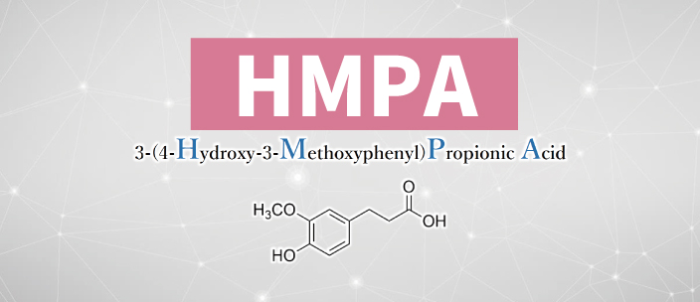New “Healthy” Claim Aims to Combat Diet-Related Diseases
The U.S. Food and Drug Administration (FDA) has unveiled a final rule updating the definition of the “healthy” nutrient content claim. This move comes as part of a broader effort to address the growing crisis of preventable, diet-related chronic diseases in the United States. The updated definition is designed to provide consumers with more accurate and current nutrition information on food labels.
Under the new guidelines, manufacturers can voluntarily use the “healthy” claim on food packaging if their products meet specific criteria. To qualify, foods must contain a certain amount from at least one of the food groups or subgroups outlined in the Dietary Guidelines for Americans, including fruits, vegetables, protein foods, dairy, and grains. Additionally, these products must adhere to limits on saturated fat, sodium, and added sugars.
FDA Commissioner Robert M. Califf, M.D., emphasized the importance of this initiative, stating, “It’s critical for the future of our country that food be a vehicle for wellness. Improving access to nutrition information is an important public health effort the FDA can undertake to help people build healthy eating patterns.”
The updated definition aligns with current nutrition science and the Dietary Guidelines for Americans. It also corresponds with the updated Nutrition Facts label, which now requires the declaration of added sugars. This change means that more foods essential to healthy eating patterns will now qualify for the “healthy” claim, potentially making it easier for consumers to identify nutritious options while shopping.
Some examples of foods that may now qualify for the “healthy” claim include nuts and seeds, higher-fat fish like salmon, olive oil, and water. This broader inclusion reflects a more nuanced understanding of nutrition and health.
The FDA’s decision comes in response to alarming statistics regarding diet-related diseases in the United States. Heart disease, cancer, and diabetes are leading causes of disability and disease, contributing to America’s lower life expectancy compared to other high-income countries. Current data shows that a significant portion of the population exceeds recommended dietary limits for saturated fat, added sugars, and sodium, while consuming insufficient amounts of dairy, fruits, and vegetables.
Jim Jones, FDA Deputy Commissioner for Human Foods, highlighted the potential impact of this change, saying, “Food labeling can be a powerful tool for change. Food labeling, like ‘healthy,’ may help foster a healthier food supply if manufacturers choose to reformulate their products to meet the new definition.”
The FDA is actively seeking collaboration with interested parties to support the use of the updated “healthy” claim. They have already partnered with Instacart to facilitate easier identification of products with the “healthy” claim through online grocery shopping filters and a virtual storefront.
Furthermore, the FDA is developing a “healthy” symbol that manufacturers could use to indicate their food meets the criteria. This symbol would provide an additional visual cue for consumers, particularly beneficial for those less familiar with nutrition information.
In conjunction with these efforts, the FDA has issued draft guidance with new voluntary sodium reduction targets and plans to propose a rule on front-of-package nutrition labeling. These initiatives are part of a comprehensive government-wide approach to improving nutrition and reducing diet-related chronic diseases in the United States.
The FDA’s commitment to creating a healthier food supply, empowering consumers with information, and supporting lifelong healthy eating patterns is evident in these science-based activities. This action aligns with the White House National Strategy on Hunger, Nutrition, and Health, demonstrating a coordinated effort to address these critical issues.
Commentary by YourDailyFit columnist Alice Winters:

The FDA’s update to the “healthy” claim definition marks a significant step forward in nutrition labeling and public health policy. However, it’s essential to critically examine both the potential benefits and limitations of this new approach.
On the positive side, the updated definition reflects a more nuanced understanding of nutrition science. By including foods like nuts, seeds, and fatty fish, the FDA acknowledges that nutrient density and overall dietary patterns are more important than simply avoiding fat or calories. This aligns with current research suggesting that some high-fat foods can be part of a healthy diet when consumed in appropriate quantities.
The inclusion of limits on added sugars is particularly noteworthy. Given the strong link between excessive sugar consumption and various health issues, this change could encourage food manufacturers to reformulate products with less added sugar. This alone could have a significant impact on public health if widely adopted.
However, there are potential pitfalls to consider. The voluntary nature of the claim means that not all manufacturers will choose to participate, potentially creating an uneven playing field in the marketplace. Moreover, the “healthy” label could be misinterpreted by consumers as an endorsement to consume these products in unlimited quantities, rather than as part of a balanced diet.
The effectiveness of this initiative will largely depend on consumer education and understanding. Without proper context, shoppers might overlook nutritious whole foods that don’t carry the “healthy” label, or they might overemphasize packaged foods that do.
Additionally, the focus on individual nutrients and food groups, while important, doesn’t fully capture the complexity of a healthy diet. Factors such as food processing methods, portion sizes, and overall dietary patterns play crucial roles in health outcomes but are not directly addressed by this labeling system.
From an industry perspective, this update could spur innovation in product formulation. However, it may also lead to a new wave of “health-washing,” where products are minimally altered to meet the criteria without substantially improving their nutritional value.
In conclusion, while the FDA’s update to the “healthy” claim is a step in the right direction, it should be viewed as one tool among many in the fight against diet-related diseases. Consumers should be encouraged to look beyond labels and develop a holistic understanding of nutrition. As we move forward, continued research, policy refinement, and public education will be crucial in translating these labeling changes into meaningful improvements in public health.



